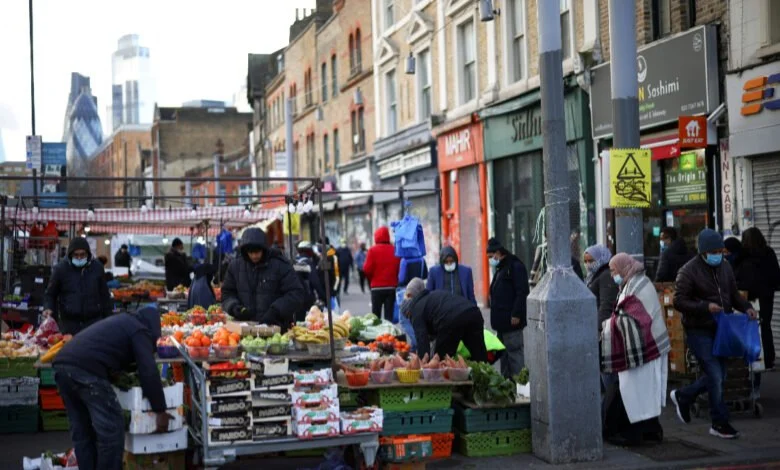Uk inflation: In July, the rate of inflation in the UK went up to 10.1%. This is the first time in more than 40 years that the annual rate of inflation has gone up by more than 10%.
The increase in the consumer price index, which was higher than what economists expected (9.8%), went up from 9.4% in June.
The rise shows how hard it is for the Bank of England to bring down inflation, which has spread from high energy prices to other goods and services across the economy.
The Office for National Statistics said that the main reason for the rise was that food prices went up last month.
With the Conservatives still fighting over who will be the next prime minister, the numbers will bring more attention to the fact that UK households’ living standards are getting worse.
UK inflation hits a 40-year high, gilts sell-off
On Wednesday, UK government bonds were under pressure after inflation numbers hit a 40-year high. This made traders think that the Bank of England would respond by raising interest rates more quickly.
The consumer price index for the UK showed a 10.1% year-on-year increase in July, which was 0.3% higher than what economists had expected and 0.6% higher than the figure for June.
Fuel and energy costs were the main reasons why prices went up so much, but core inflation, which takes out these volatile items, also came in higher than expected at 6.2% per year.
The yield on UK two-year gilts, which is affected by what people think will happen to interest rates, went up by 0.13 percentage points at the start of the day and is now 2.28 percent. The yield on ten-year gilts went up by 0.04 percentage points, to 2.17 percent. When the price of a bond goes down, its yield goes up.
The move made the difference between the two-year and 10-year bonds 0.14 percentage points bigger, which is the biggest difference since October 2008.
That took the shine off a quiet day for equity markets around the world. The FTSE 100, which is mostly made up of international energy and commodities companies and is up 2.05% this year, traded flat, and the pound was mostly stable against the dollar and the euro, trading at $1.21 after gaining 0.1% against the dollar.
The Stoxx 600 index for the European area went up by 0.2%. In Asia, the Topix index in Japan went up 1.26 percent and the Hang Seng index in Hong Kong went up 0.9%. Both of these indices had gone down in the previous session.
UK bond market sends out an economic warning
Short-term UK government bonds fell sharply on Wednesday as high inflation data raised expectations for interest rate hikes from the Bank of England. This sent a measure of worry about Britain’s economy to its highest level since 2008, which is when the measure was first used.
The yields on two-year gilts, which are affected by what people think will happen with monetary policy, went up by 0.24 percentage points early on Wednesday, reaching 2.39 percent. Bonds with longer terms were less likely to be sold, so the 10-year yield went up 0.11 percentage points to 2.23 percent.
Because of these changes, the yields on two-year bonds are now more than 0.15 percentage points higher than those on 10-year bonds. This is the biggest “inversion” of Britain’s yield curve since the global financial crisis in 2008.
For the risk of buying bonds with long maturities in the future, investors usually want to pay more to borrow money, so yield curves usually go up.
UK house price growth slowed to 7.8% in June
The Office of National Statistics said on Wednesday that UK house prices rose 7.8% in the year to June, which is less than the 12.8% annual rate seen in May.
But the slower rate of growth was affected by “the rises in [house] prices seen in June 2021, which were caused by changes to tax breaks,” the ONS said.
Even though mortgage costs have recently gone up because the Bank of England raised its benchmark lending rate from 0.1% in December to 1.75 % this month to try to slow down inflation, the rate has gone up. Economists expect more rate hikes in the coming months, which will make mortgage payments even more expensive.
According to ONS data, the average UK house cost £286,000 in June, which was £20,000 more than the same month last year.
In England, the average price went up 7.3% over the past year to £305,000. In Wales, it went up 8.6% to £213,000. In Scotland, it went up 11.6% to £192,000, and in Northern Ireland, it went up 9.6% to £169,000.
The rate of UK inflation jumped to 10.1% in July. This is the first time in more than 40 years that the rate of inflation has gone up by more than 10% annually.
Jean Jameson, the head of sales at estate agents Foxtons, said that even though London had the lowest annual growth of any UK region, its 8.2% increase from July 2021 was the “biggest change in annual property prices since July 2016.”


